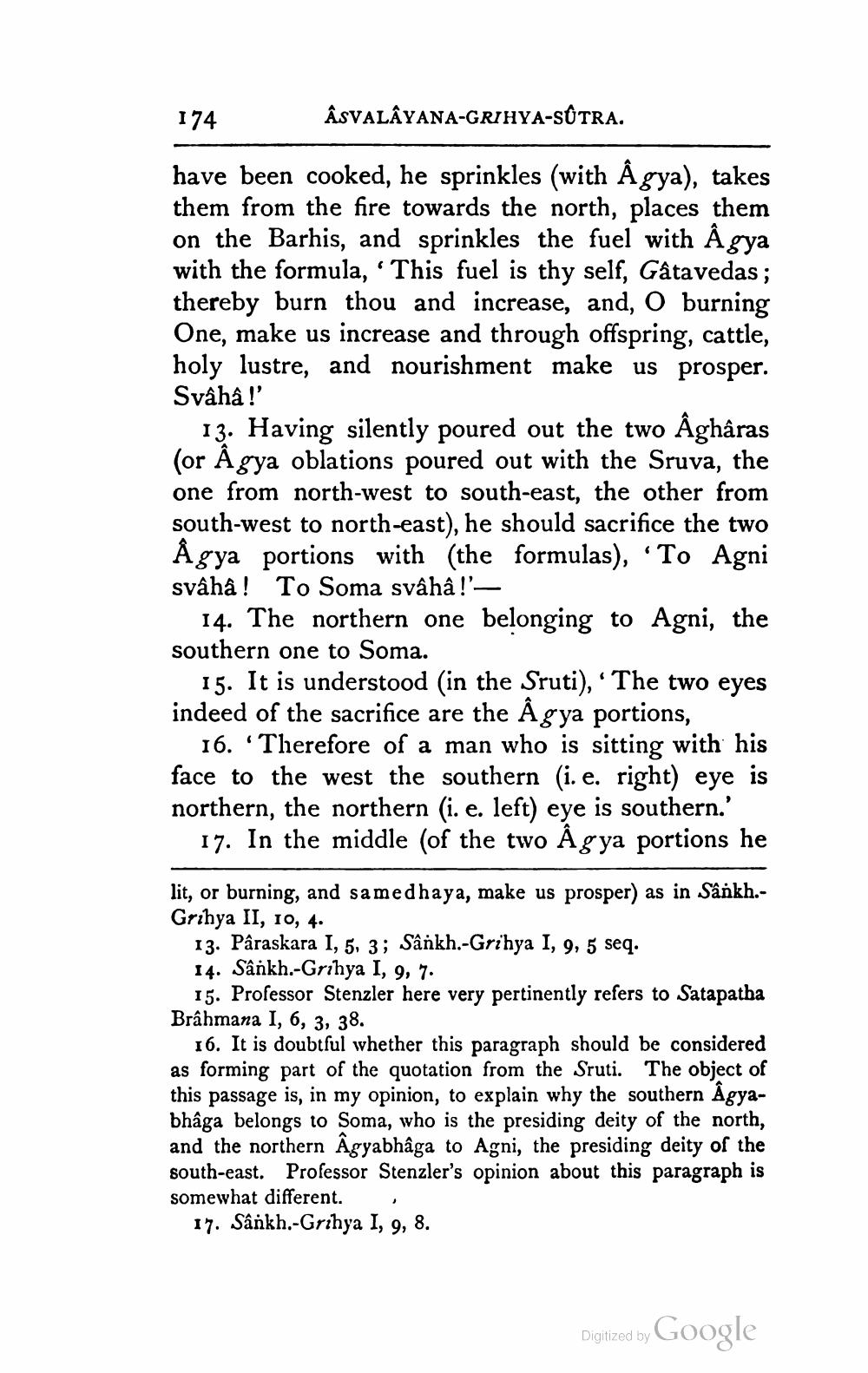________________
174
ASVALÂYANA-GRIHYA-SUTRA.
have been cooked, he sprinkles (with Âgya), takes them from the fire towards the north, places them on the Barhis, and sprinkles the fuel with Agya with the formula, 'This fuel is thy self, Gâtavedas; thereby burn thou and increase, and, O burning One, make us increase and through offspring, cattle, holy lustre, and nourishment make us prosper. Svâhâ!'
13. Having silently poured out the two Âghâras (or Agya oblations poured out with the Sruva, the one from north-west to south-east, the other from south-west to north-east), he should sacrifice the two Agya portions with (the formulas), 'To Agni
svâhâ! To Soma svâhâ!'—
14. The northern one belonging to Agni, the southern one to Soma.
15. It is understood (in the Sruti), 'The two eyes indeed of the sacrifice are the Agya portions,
16. 'Therefore of a man who is sitting with his face to the west the southern (i. e. right) eye is northern, the northern (i. e. left) eye is southern.'
17. In the middle (of the two Âgya portions he
lit, or burning, and samedhaya, make us prosper) as in Sankh.Grihya II, 10, 4.
13. Pâraskara I, 5, 3; Sânkh.-Grihya I, 9, 5 seq.
14. Sânkh.-Grihya I, 9, 7.
15. Professor Stenzler here very pertinently refers to Satapatha Brahmana I, 6, 3, 38.
16. It is doubtful whether this paragraph should be considered as forming part of the quotation from the Sruti. The object of this passage is, in my opinion, to explain why the southern Agyabhaga belongs to Soma, who is the presiding deity of the north, and the northern Âgyabhâga to Agni, the presiding deity of the south-east. Professor Stenzler's opinion about this paragraph is somewhat different.
17. Sânkh.-Grihya I, 9, 8.
Digitized by Google




